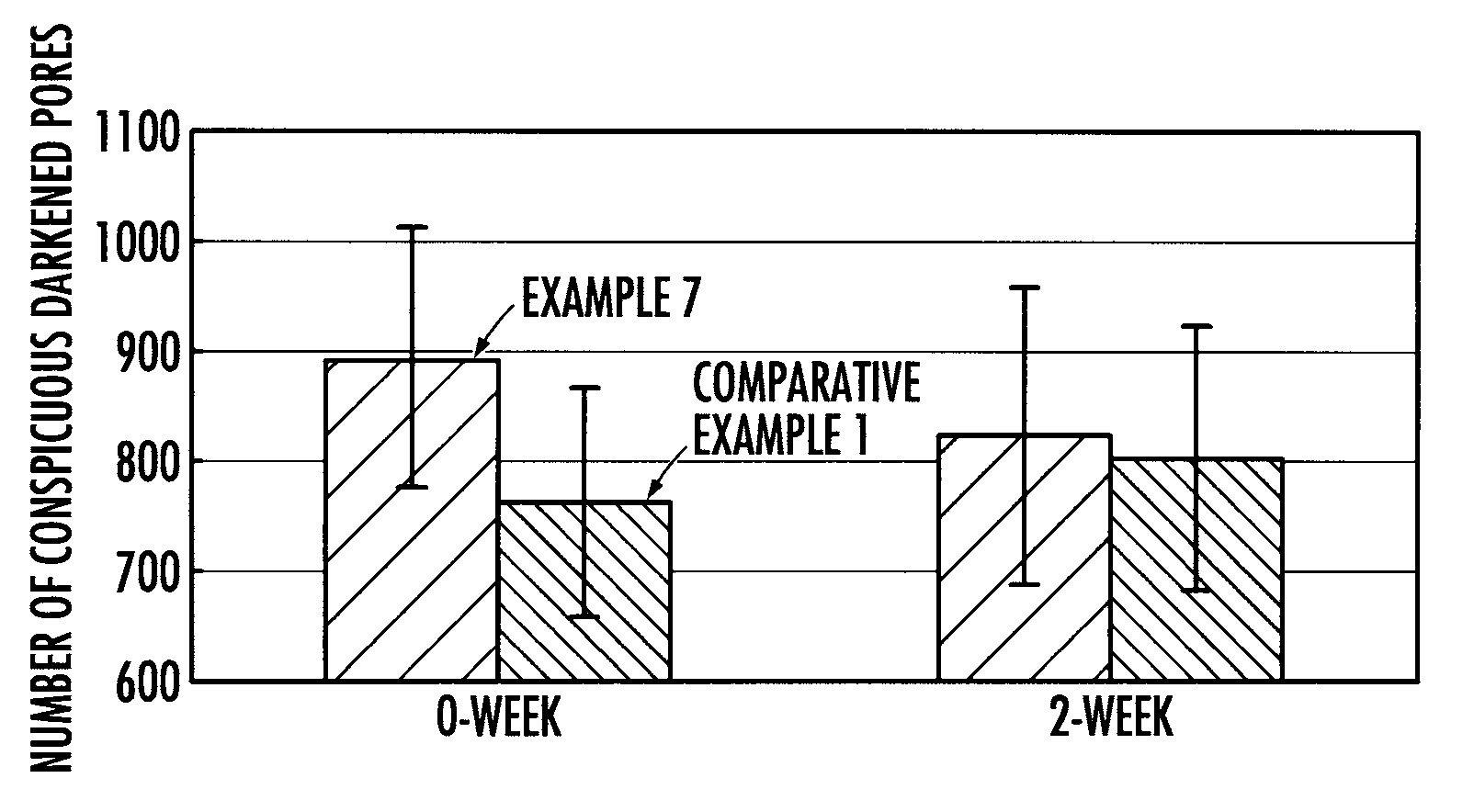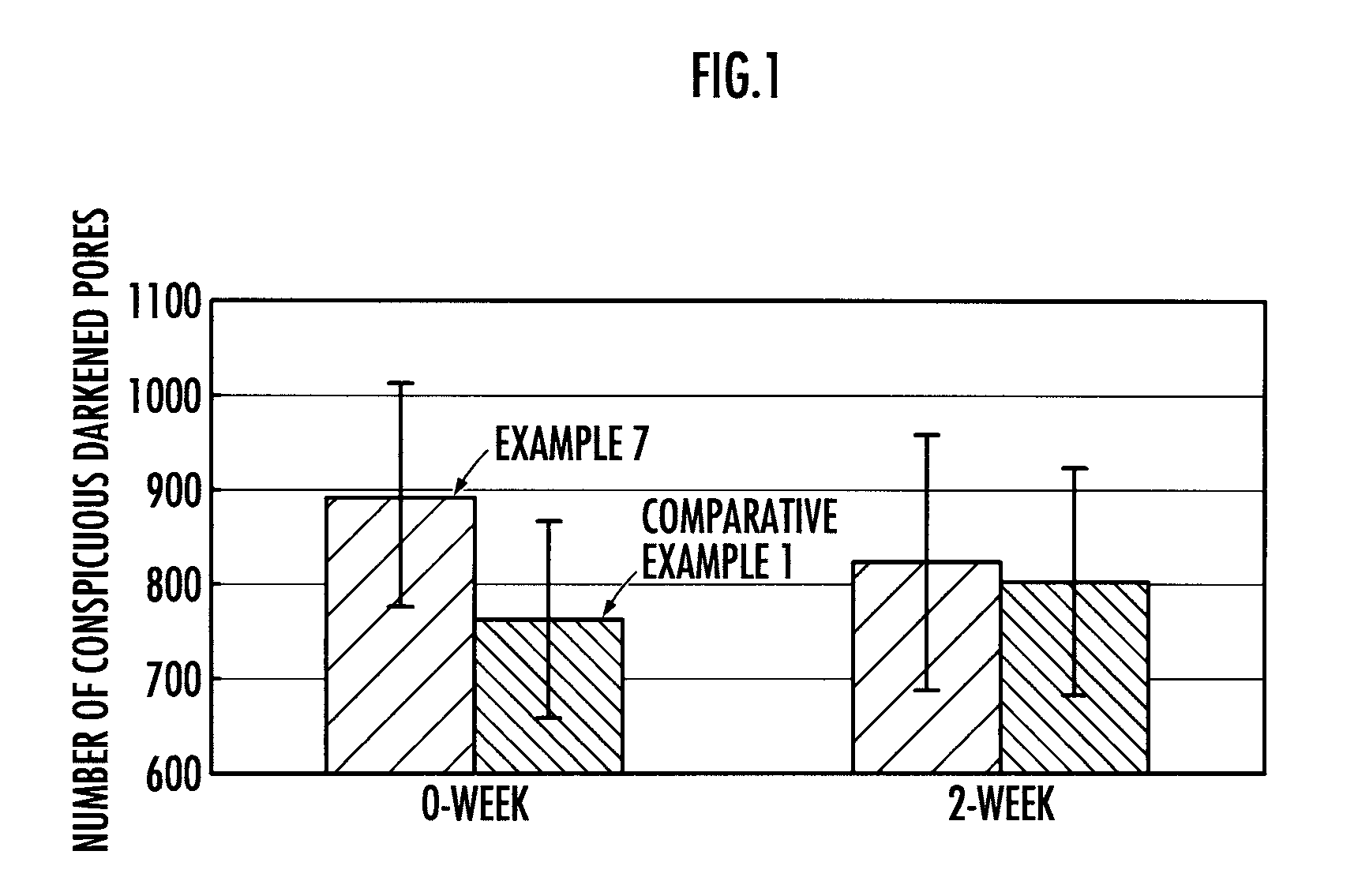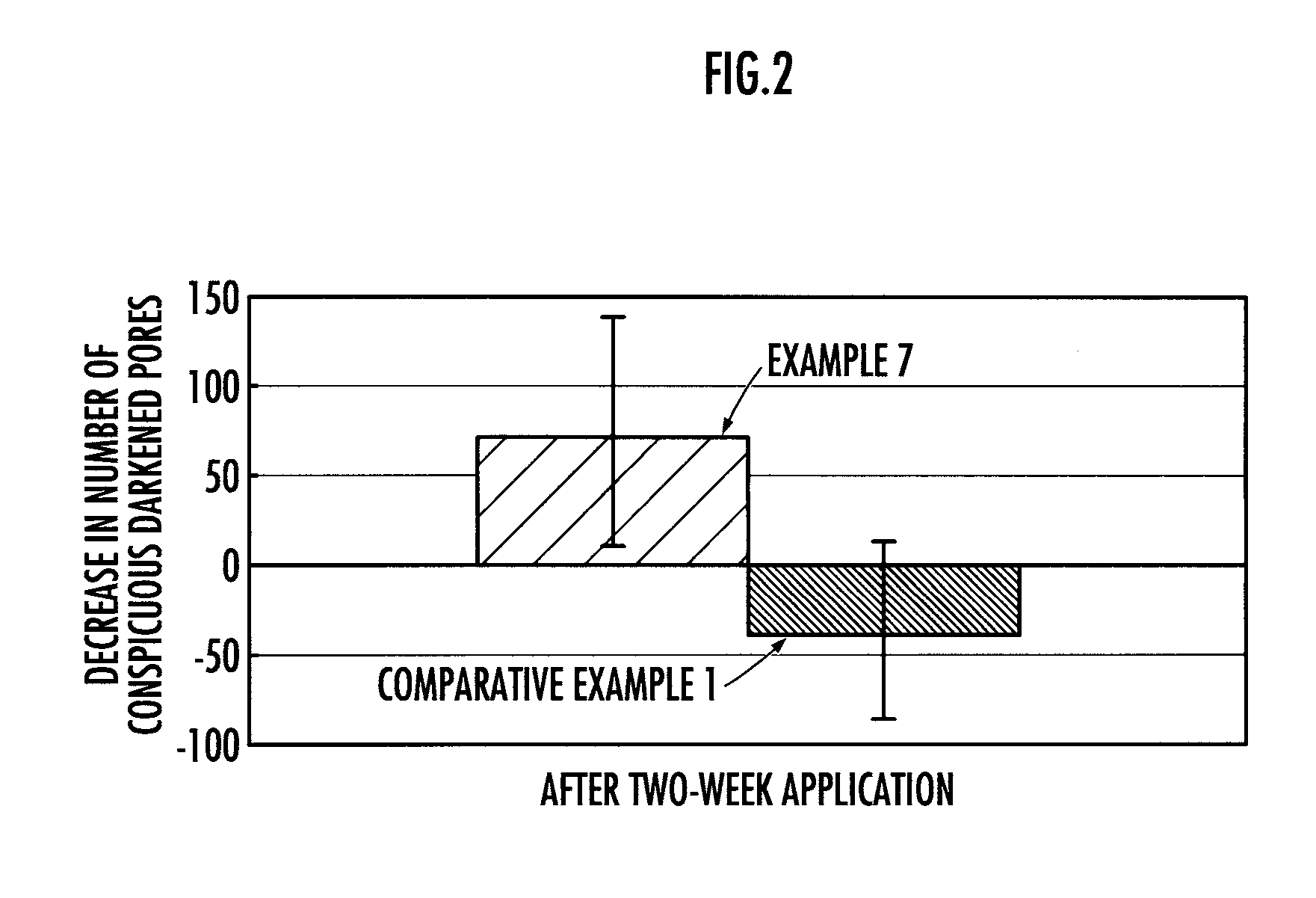Cosmetic Product
a technology of ovaries and cosmetics, applied in the field of cosmetic products, can solve the problems that the activities of the extracts obtained from the fish ovarian membrane are not known, and achieve the effects of inhibiting skin allergy symptoms, inhibiting the release of histamine, and inhibiting allergic symptoms
- Summary
- Abstract
- Description
- Claims
- Application Information
AI Technical Summary
Benefits of technology
Problems solved by technology
Method used
Image
Examples
example 1
[0039]Roe was collected from ovaries of Oncorhynchus keta from Hokkaido, Japan, and the ovarian membrane was sufficiently washed with water. Purified water (100 mL) was added to 100 g of the washed ovarian membrane, and the mixture was pulverized using a mixer (manufactured by Matsushita Electric Industrial Co., Ltd. under the name of MX-X107) for one minute. This pulverization process was repeated ten times to give a pulverized substance. The pulverized substance was further ground using a mortar and then filtered through wire gauze having 300 meshes, and the resultant substance was used as a sample.
[0040]The sample prepared in this Example is a pulverized substance of ovarian membrane of Oncorhynchus keta. Then, this sample prepared in this Example was subjected to a histamine-release inhibition test.
[0041]In the histamine-release inhibition test, the above sample was diluted with purified water to prepare a sample solution containing 0.2% of solid contents.
[0042]Then, 0.2 mL of t...
example 2
[0046]300 mL of purified water was added to the sample prepared in Example 1, and the mixture was pulverized using a high pressure emulsifier (manufactured by Mizuho Industrial Co., Ltd. under the name of Microfluidizer M110-E / H) at a treatment pressure of 150 MPa. This pulverization process was repeated twice to give a sample.
[0047]The sample prepared in this Example is a finely pulverized substance of ovarian membrane of Oncorhynchus keta. Then, except for the fact that the sample prepared in this Example was used, the same histamine-release inhibition test as in Example 1 was carried out to determine the histamine-release inhibition rate. The results are shown in Table 1.
example 3
[0048]The sample (aqueous solution) prepared in Example 2 was adjusted to a pH of 7.2 to 7.5, and 0.5 g of Actinase E (manufactured by Kaken Pharmaceutical Co., Ltd.) was added thereto as a protease. The resulting mixture was stirred at 40° C. for 3 hours for the reaction.
[0049]Then, the protease in the aqueous solution was inactivated by heating the solution at 90° C. for 5 minutes, and then the aqueous solution was simply filtered through a filter having 30 meshes to remove coarse substances such as undecomposed ovarian membrane.
[0050]Then, 500 g of activated carbon was added to the filtrate obtained by the simple filtration. The mixture was heated at 60° C. for 30 minutes for defatting, decoloration, and deodorization of the filtrate. The filtrate was filtered using a filter press, and the obtained filtrate was concentrated under reduced pressure and sterilized. The sterilized filtrate was dried by spray dry to give a sample.
[0051]The sample prepared in this Example is an ovarian...
PUM
 Login to View More
Login to View More Abstract
Description
Claims
Application Information
 Login to View More
Login to View More - R&D
- Intellectual Property
- Life Sciences
- Materials
- Tech Scout
- Unparalleled Data Quality
- Higher Quality Content
- 60% Fewer Hallucinations
Browse by: Latest US Patents, China's latest patents, Technical Efficacy Thesaurus, Application Domain, Technology Topic, Popular Technical Reports.
© 2025 PatSnap. All rights reserved.Legal|Privacy policy|Modern Slavery Act Transparency Statement|Sitemap|About US| Contact US: help@patsnap.com



